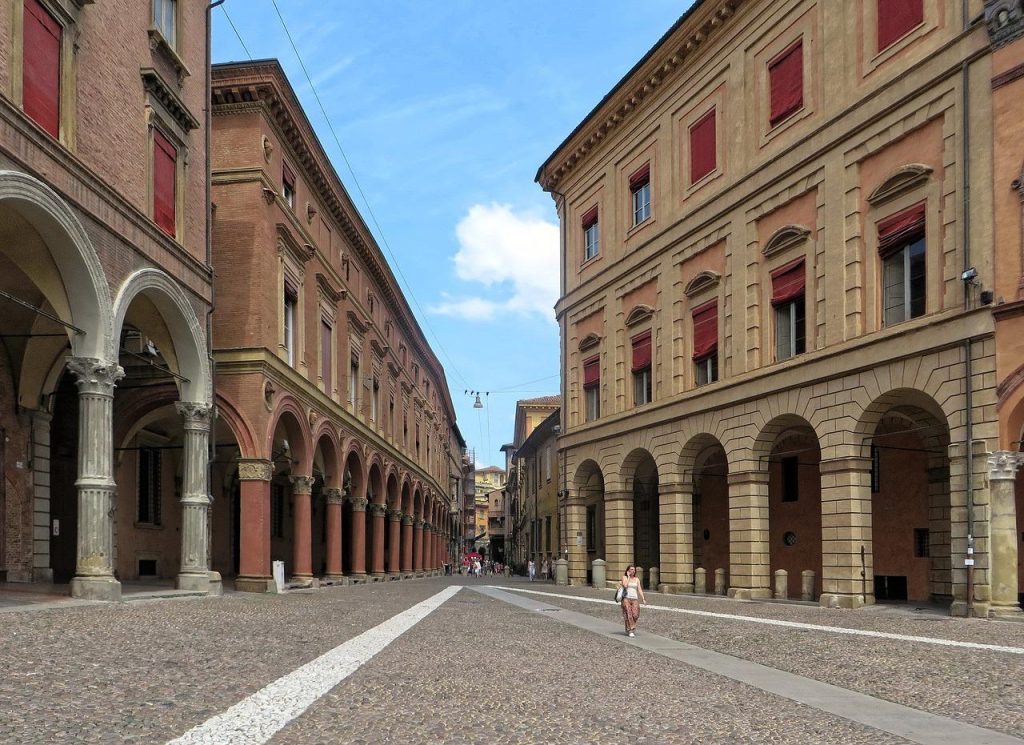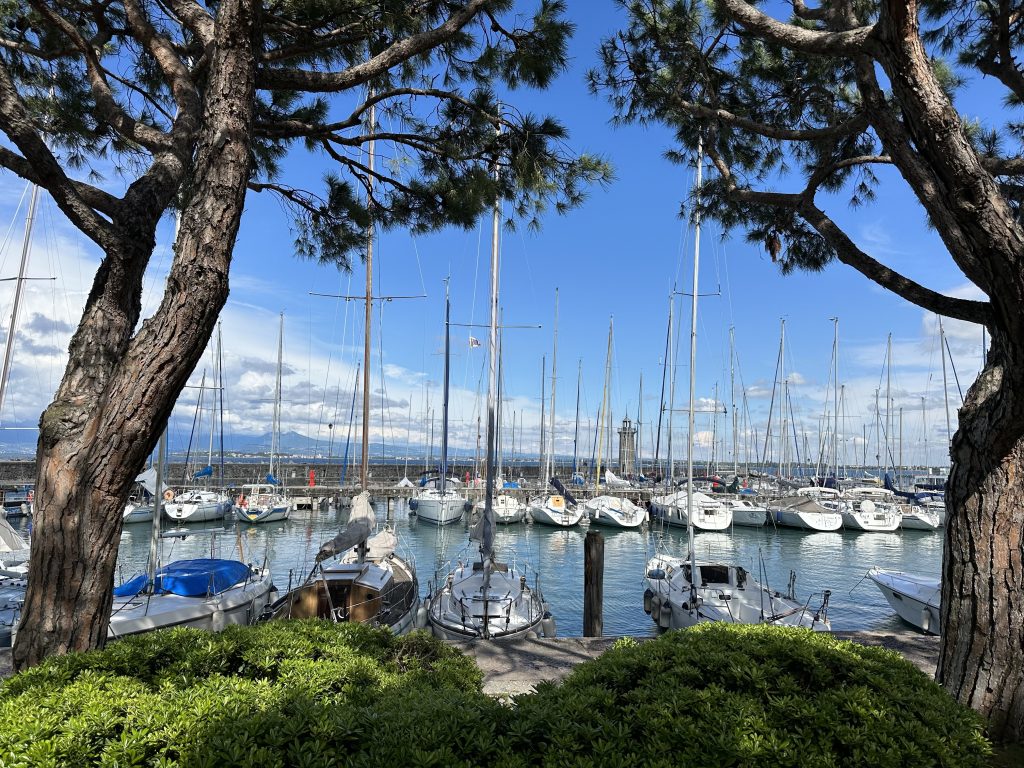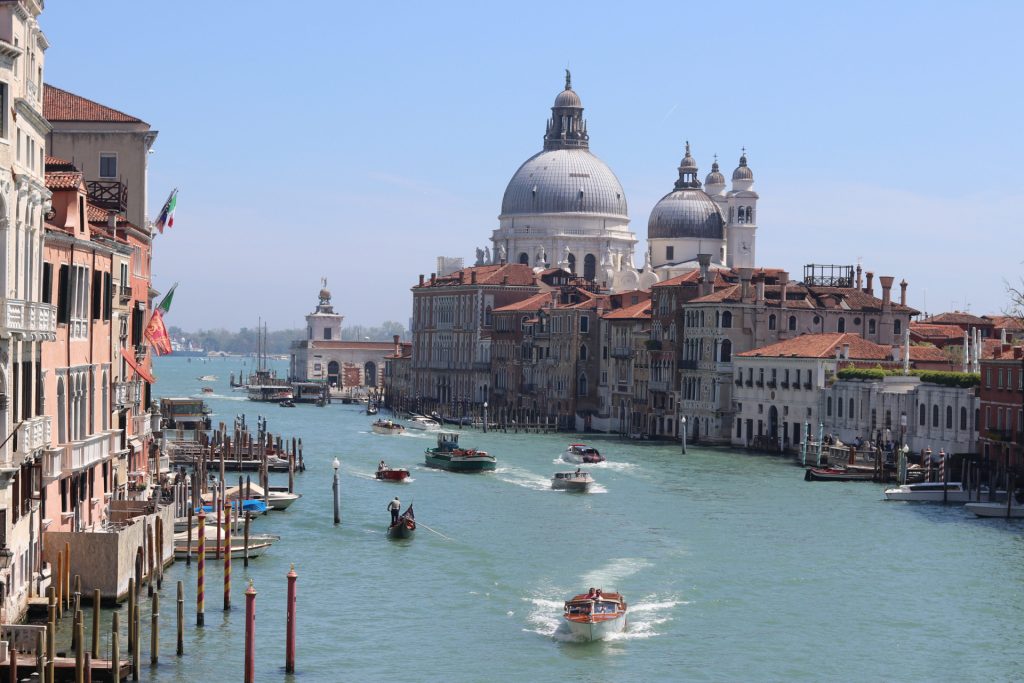The 8 Regions Of Northern Italy
Northern Italy is divided into 8 regions and boasts some of Italy’s most iconic cities, sites and attractions.
From Modena – the spiritual home of Ferrari to Turin and the home of Juventus – the Old Lady of world football. There is Genoa, the gateway to cruising the Mediterranean and Trieste, an ideal starting point for a trip into Slovenia, Croatia and beyond. There is also Verona – home to opera and so much more.
Then there is the jewel of the North and Venice. possibly the most beautiful city in the world with its canals, architecture and sheer class enticing the rich and the famous not to mention the romantics from across the world. I loved Venice just for the pure sense of relaxation you feel when wandering around the city’s little cobbled streets and St Mark’s Square.
Northern Italy is a dream – the food, the wine, the people, the scenery, the history – it is a part of Europe that is incomparable and one that holds a special place in my heart.
Check out my Italian Adventure when I took a trip from Venice to Bergamo visiting several beautiful cities, lakes and regions en route.
Aosta Valley
Aosta Valley is a small mountainous region of Italy located in the North West between France and Switzerland. The regional capital is Aosta.
Aosta is rich in monuments from pre-historical, Roman, medieval and even later times. The thousand-year-old Sant‘Orsa craft fair is held each year in the centre of Aosta on the 30 and 31 of January.
Attracting visitors from all across the region there is a wide range of interests including wood carvings, soapstone, ironwork, lace and woollen fabrics, as well as farming equipment, furniture, household utensils and sculptures.
Attractions of the Aosta Valley Region
The Alps – Cervino, Monte Rosa, Gran Paradiso and then there is Mont Blanc, which at 15,781 feet is the highest mountain in Europe.
Courmayeur – is one of Italy’s signature ski resorts with an amazing cable car ride and sensational views to take in.
The Gran Paradiso – a national park where it is still possible to see ibex, chamois, eagles and marmots in their natural surroundings.

Emilia Romagna
Emilia Romagna lies between the River Po to its north and the Apennine Mountains (to its south). It is one of the most fertile and productive regions of Italy. The capital of the region is Bologna.
Bologna is Europe’s oldest university town and therefore quite a lively, historic capital of the Emilia-Romagna region. Its Piazza Maggiore is an enormous plaza lined with cafes and medieval and Renaissance structures such as the City Hall, the Fountain of Neptune and the Basilica di San Petronio. Then there is Piazza Verdi which attracts musicians and arty students, while the many bars under the arches of Piazza Santo Stefano are a great spot for a sundowner.
At weekends the central Via Ugo Bassi and Via Rizzoli, along with perpendicular Via ell’Indipendenza, are pedestrianised and filled with shoppers and street performers. In the evenings, cafes are packed with people as the city is flooded with Bolognesi.
Attractions of the Emilia Romagna Region
Emilia Romagna – occupies an interior and a coastline and is a hotbed for music, cinema and art.
Rimini, Riccione and Cattolica – for sun sea and entertainment these resorts are some of the region’s most popular.
The Apennines – between Parma and Piacenza are ideal for outdoor pursuits such as horse riding in the splendid parks and nature reserves.
Salsomaggiore and Bagno di Romagna – two popular wellness spas.
Modena – a visit to the home of Ferrari is a must for all motorsport fans.
Parma – a city famous for its architecture, music, art, prosciutto (ham), cheese and surrounding countryside.

Friuli Venezia Giulia
Friuli-Venezia Giulia – an area with a mixture of influences and some off-the-beaten-track destinations. This region is situated in Italy’s northeast corner and borders Slovenia and Austria. The capital is Trieste.
Trieste – a city I have flown to for access to Slovenia and also Istria in Northern Croatia. Trieste looks out over the blue Adriatic, white limestone cliffs and green hills. The city’s main squares are lined with spectacular neoclassical buildings, and the much-photographed canal has an endless number of cafes and restaurants.
Trieste has a seafaring history and while there are some parts which need investment and modernisation, in the heart of Trieste are the delightful and popular streets of the Borgo Teresiano. A well-visited attraction is to climb to the top of the San Giusto hill for the best views of the city.
Attractions of the Friuli Venezia Region
Friuli Venezia Giulia overlooks the Adriatic Sea and is surrounded by high mountain
The impressive Carso plateau is formed by windswept rocks and soil erosion has created a series of caves.
The Carnia & Julian Alps – mountain sceneries of the Eastern Dolomites are spectacular as well as the lakes & valleys.
Lignana Sabbiadoro – a tourist resort between Veneto up to Monfalcone and a coastline dotted with lagoons and sandy beaches.
Monfalcone to Trieste – a rocky wild coastline.

Liguria
Ideal for a seaside or walking holiday, the region enjoys a mild climate in winter with the capital being Genoa.
I visited Genoa a few years back and had the pleasure of an afternoon and evening in the city before heading off on a cruise ship the following day. The city is Italy’s largest seaport and an incredibly important gateway to the Mediterranean for many holidaymakers. It also boasts a pretty old harbour, a popular aquarium and a lovely historic city centre comprising a labyrinth of narrow alleyways and the Cathedral of San Lorenzo known locally as the Duomo di Genova.
Many visitors including those I travelled with often take the trip 15 miles journey south by land or boat down to Portofino which is an exclusive town well known for its pastel-coloured houses, a small port and pretty bays. It is a great lunch stop on a day excursion!
Attractions of the Liguria Region
Cinque Terre – five small picturesque seaside villages – Monterosso al Mare, Vernazza, Corniglia, Manarola and Riomaggiore.
Dolceacqua – a small medieval hamlet in the backcountry, on the west side of the region, made famous by Claude Monet.
Il Golfo Dei Poeti – the Gulf of La Spezia has always been a preferred destination for writers and artists such as Lord Byron.
Sanremo – an elegant seaside resort famous for its music festival and its carnival, as well as its beaches and seafront.
Camogli – nestled in the rocks in the Gulf of Paradise, it is a charming village full of hiking trails.
La Riviera delle Palme – a stunning coast which includes the resorts of Alassio, Loano, Albenga, the Baia dei Saraceni and Finalborgo.
Triora – sadly noted for witch trials in the 1500s, it is a small hamlet with museums and festivals.
Taggia e Arma di Taggia – between the resorts of Arma di Taggia and Taggia there are popular hiking trails and motorcycle riding routes.

Lombardy
Lombardy – an urban region with so much to enjoy for the culture lover. The capital of Lombardy is the sensational city of Milan.
Back in 2001, I visited Milan for a couple of nights to take in a football match at the San Siro Stadium – one of the world’s greatest football stadiums. As a sports fan it was something special to see your little team – Ipswich Town – play a competitive match against one of the football’s powerhouses – we got thrashed but who cares!
The trip to Milan also enabled me to discover the other highlights of a city that is known as one of the most important fashion capitals of the world. I recall walking down the Via Montenapoleone one of the top streets for the top fashion labels and being mesmerised by the people carrying the Armani, Boss and Gucci bags. The most incredible shopping centre and that is really what it is despite taking the appearance of an Opera House is the Grand Galleria Vittorio Emanuele II.
I also particularly loved the enormous Piazza del Duomo where you start to visit the historical sites. These include the magnificent Duomo di Milano cathedral, an impressive Opera House, ancient churches and a great variety of museums and art galleries.
I enjoyed my Autumn visit to Milan…..I loved just to sit with a coffee and watch the beautiful Milanese strutting around the city in the finest of clothes and darkest of shades.
Another key attraction of Lombardy is the quite magnificent Lake Como – Italie’s third biggest lake. This area has just the most stunning beauty not just in terms of the lake but also in the many towns that are dotted around the area. Some of the most popular retreats for the wealthy are Bellagio, Tremezzo and Varenna. Lake Como has attracted artists, poets and celebrities for centuries and it’s clear to see why.
Attractions of the Lombardy Region
Bergamo – a charming medieval historic city protected by walls of the XVI and XVII centuries and is a Unesco World Heritage site.
Orobie Alps – a protected mountain range and nature reserves stretching from Lake Como to Valtellina and Camonica Valley.
Mantua – a nature reserve surrounded by three lakes and a main centre of the Italian Renaissance.
Sirmione – a jewel on Lake Garda, renowned for its Roman remains and thermal waters.
Franciacorta – a popular wine region between Brescia and Lake Iseo.
Valtellina – a valley that offers endless opportunities for mountain sports, wellness, culture and good food.
Monte Isola – a green mountain island dotted with villages in the middle of Lake Iseo.

Sarnico-View, Lake Iseo
Piemonte
Piedmont or Piemonte in Italian is perhaps more of a winter region considering its impressive mountain landscapes. The capital of this region is Turin.
When people mention Turin to me I immediately think of football as this is home to Juventus (and Torino) – one of the world’s most famous football teams affectionately known as the “Grand Old Lady” of Italian football. The city is an important business and cultural centre however it is also known for its art galleries, restaurants, churches, palaces, opera houses, piazzas, gardens, theatres, museums and more!
Those who love their architecture are attracted by the sheer variety of periods represented including Renaissance, Baroque, Rococo, Neo-classical, and Art Nouveau. Many of Turin’s public squares, castles, gardens and elegant palaces such as the Palazzo Madama, were built between the 16th and 18th centuries and a part of the historical centre of Turin was inscribed on the World Heritage List. The city also boasts the famous Shroud of Turin.
Attractions of the Piemonte Region
Monviso – on the Piemonte side of Monte Rosa for stunning landscapes.
Val di Susa, Valsesia & Val d’Ossola – The Alps form the background for sweeping, picturesque valleys.
Langhe and Monferrato – Hills and vineyards that are dotted with small towns and castles.
Novara and Vercelli – Expanses of water and rice paddies, long rows of poplars and old farmhouses make up the typical scenery of the plains.
Lake Maggiore is a popular tourist resort, including Stresa and the Borromean Islands.
The fortress at Ivrea – as well as the famous Residences of the Royal House of Savoy and the Sacri Monti.
The Acqui Terme and Vinadio spas offer treatments and therapies

Trentino Alto Adige
Trentino Alto Adige is situated in the very north of Italy bordering Austria and Switzerland and is best known for the beauty of its mountain ranges. The regional capital is Trento.
Trento is considered to be one of the richest cities in all of Italy and so the citizens enjoy a high quality of life and standard of living due to its thriving economy. It also has a deep history given its involvement with various Empires and rulers and as such there are many beautiful historical structures such as the Duomo and Castello del Buonocnsiglio.
Furthermore, the city has a host of fine museums and galleries and some great shopping opportunities.
Attractions of the Trentino Alto Adige Region
Bolzano – One of my favourite places in Northern Italy is Bolzano with its influence of both Italian and German being so close to both countries in the Southern Tyrol.
Lake Garda is situated in three Italian regions – Lombardy, Veneto and Trentino Alte Aldige.
Madonna di Campiglio, Canazei, Moena, and San Martino di Castrozza are popular winter ski and summer activity resorts.
Merano, Lèvico Terme, Peio, Rabbi and Comano Terme are well known in the region as spa towns.

Veneto
The region of Veneto is located in the northeast of Italy with rather unsurprisingly the capital being Venice.
I visited the pedestrianised and UNESCO-protected city of Venice back in the 1990s. I just found it breathtaking and whilst I was only there for two nights I could easily have stayed a week and revelled in the sights, the sounds and dare I say it the smells of this incredible city. There is music, architecture and food all in a setting of tiny streets (which you just have to explore) and a collection of islands linked by bridges and waterways.
The heart of Venice is St Mark’s Square and I recall staying in a tiny hotel just off a tight narrow side street. You know one of those hotels that had deep crimson flowery slightly grubby carpets and an old-fashioned noisy gated elevator with a lengthy pause before it opened its doors causing the heart to beat a little faster! I love that type of hotel.
St. Mark’s Square, or Piazza San Marco, is in the heart of the city and is often a great place to start your explorations. This is also the place for one of the most expensive coffees in the world although with the accompanying views it’s worth the money. From St Mark’s Square, I went up the Campanile di San Marco – the large bell tower at the corner of the square with superb views of the city.
For another great view and a 15-minute stroll along the Grand Canal from St Marks Square is the Ponte dell’Accademia. This is the location for one of the best and most popular photos of Venice with boats and gondolas in the foreground and the Basilica di Santa Maria Della Salute framing the view at the end. Just breathtaking.
Then there is the Rialto Bridge – probably the most famous of all the bridges in Venice. The Rialto bridge gets its name from the Rialto market on the eastern bank of the river.
No trip to Venice is complete without a Gondola Ride however it’s not cheap at about 80 euros for 20-30 minutes and that’s the day rate – it goes up at night time. However, like the coffee in St Marks, it’s the experience you are paying for and as long as you don’t get seasick then it’s worth it!
Another popular attraction is the Bridge of Sighs and Doge’s Palace. The powerful Doge was the ruler of the Venetian Republic. Just next to the Doge’s Palace is the Ponte Dei Sospiri, better known as the Bridge of Sighs.
The Lido, or Venice Lido is an eleven-kilometre narrow strip of land which separates the central part of the Venetian lagoon from the Adriatic Sea. Out of season, this immaculate resort provides a range of reasonably priced shops and restaurants. There are lovely views over the lagoon to Venice, and in winter and spring, you may be lucky enough, on a clear day, to see the snow-capped summits of the Dolomites. During the summer, however, the island’s hotels open for the season and hordes of beach lovers cross from the lagoon-shore ferry stop to enjoy the sun, the beach, the ice cream and a different side of Venice we all know and love.
Finally, there are the islands of Murano & Burano. Murano is famous for its glass-making centre and Burano for its brightly coloured fishermen’s houses and seafood restaurants.
Attractions of the Veneto Region
Verona – a city of love, fantastic shopping and restaurants and of course opera.
Lake Garda – for stunning villages, thermal spas and hiking/trekking opportunities.
The Palladian Villas – built around the mid-16th century, scattered in the provinces of Vicenza, Padua, Treviso and Rovigo.
Dolomiti Bellunesi – Incredible mountain scenery of The Dolomites including the Three Peaks of Lavaredo, Marmolada, Monte Civetta
The Prosecco Hills – Home to the sparkling white wine vineyards between Conegliano and Valdobbiadene.
The Po River Delta – is a protected area of wetlands inhabited by more than 300 species of birds and a popular destination for birdwatching.
Cittadella – a fascinating walled city with medieval origins just a few kilometres from Padua.
Padua – a refined city worth a visit even only for admiring Giotto’s masterpieces in the Scrovegni Chapel
Bassano del Grappa – located at the foot of Monte Grappa, it’s famous for its covered wooden bridge.

Contact Information
For further information on taking a trip to any region of Italy or Europe, contact your local travel agent, a specialist tour operator or the Italian National Tourist Office.







